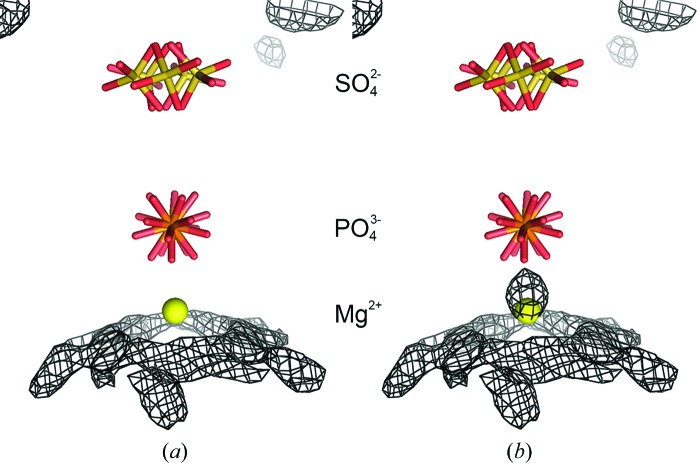Figure 4.
Modeling of the magnesium ion on the fivefold axis. (a) and (b) show the final constrained model along the fivefold axis. The maps are averaged σA-weighted F o − F c maps contoured at 2.5σ. The map in (a) was phased by a model in which the magnesium ion was free to move along or off the fivefold axis. There is no negative density at the magnesium position nor is there positive density between the Mg2+ and the phosphate ions, suggesting that the entity at this position is modeled well by a Mg2+ ion. The map in (b) was phased by a model in which a water molecule was free to move along or off the fivefold axis. While the Mg2+ in (a) stayed on the fivefold axis, the water molecule moved off the axis by almost 0.5 and 0.71 Å from the Mg2+ position. As seen here, there was a large positive density peak at the site extending towards the phosphate ion, all of which suggests that water inadequately fits the data and that there is some entity here, such as an Mg2+ ion, that should be closer to the phosphate than water. The larger van der Waals contact distance for water accounts for the manner in which the water molecule refines away from the fivefold axis while producing difference density on the fivefold that is closer to the phosphate than a water can be.

